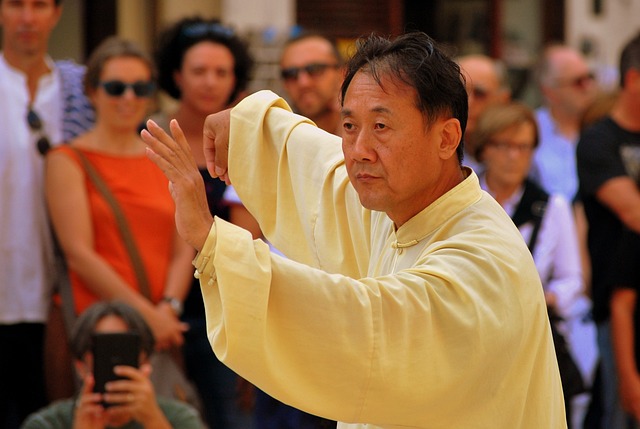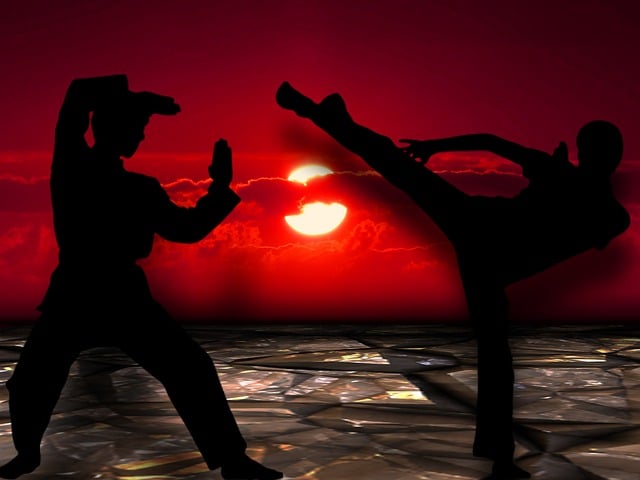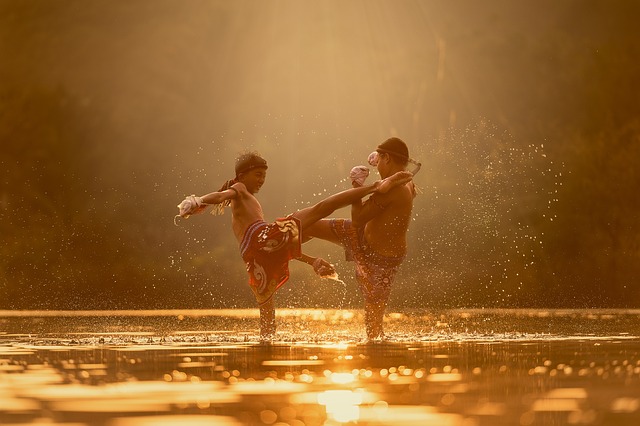Martial arts are the relics of ancient combat styles that have been developed and refined over millennia in several cultures throughout the world. Martial arts are practiced for self-defense, physical fitness, and mental discipline. They are also done for sport and personal development.
The origins of martial arts may be found in many ancient civilizations, such as China, India, and Japan, which are thousands of years old. Martial arts were used in ancient cultures to fend off invaders and conquerors and were an essential part of military training. Over time, these fighting techniques were refined and enhanced, leading to the establishment of several martial arts schools.
These days, there are several martial arts schools accessible, each with a comprehensive collection of techniques and philosophies of its own. Taekwondo, karate, judo, and Brazilian Jiu-Jitsu are the most well-known styles. The fundamental objectives of all styles—each with a unique focus and set of techniques—are fostering personal growth, improving fitness, and cultivating both mental and physical discipline.

One of the most important aspects of martial arts is the value placed on discipline and respect. Pupils are taught to approach their training with a disciplined and focused mindset and to treat their professors, opponents, and other students with respect. Since this discipline transfers to other facets of life, such as work, education, and relationships, students may also achieve in these domains.
Another essential element of martial arts is fitness. Students should anticipate improvements in all the abilities necessary for martial arts practice as they progress in their training, including strength, flexibility, and endurance. Many martial arts schools now include aerobic and conditioning exercises into their training to help students reach their fitness goals.
Martial arts may also promote a sense of community and camaraderie. Within the welcoming and supportive cultures that many institutions cultivate, students often form close relationships with both their instructors and other students. It may be especially important for kids and teenagers who struggle to feel like they belong to anything other than their close family to experience this sense of community.
Martial arts may be a lot of fun in addition to having numerous health benefits for the body and mind. Whether competing or merely honing techniques with peers, martial arts provide the opportunity to push oneself, set and achieve goals, and enjoy the companionship of a shared pursuit.
Martial arts are often recommended for anybody looking to improve their level of physical fitness, mental discipline, and personal growth. Whether practiced as a hobby or more seriously, martial arts provide a unique and pleasurable experience that may benefit individuals of all ages and backgrounds.
The advantages of martial arts practice:
One of the most obvious benefits of learning martial arts is improved physical conditioning. Regular exercise may help you gain more strength, flexibility, and endurance. Martial arts training may improve your overall agility, balance, and coordination.
Self-defense: Learning martial arts is a popular way for people to improve their self-defense abilities. Martial arts training may teach you a variety of strategies and techniques for defending against physical attacks. Even while no amount of training will guarantee your safety in every situation, martial arts may give you greater self-assurance and prepare you to defend yourself if needed.
Mental Discipline: In addition to physical fitness, martial arts training strongly emphasizes mental discipline. Students gain focus skills and a strong feeling of self-discipline.
Martial arts training may be a great way to lower stress and improve your mental health in general. Exercise has the potential to elevate your mood and relieve stress. Additionally, practicing martial arts requires focus and discipline, which may help you improve composure and concentration.
Self-assurance: As your martial arts training advances, you’ll experience a sense of fulfillment and certainty. This might be highly beneficial for kids and teenagers who might have self-esteem issues. Martial arts training may increase self-confidence, which carries over into other areas of life such as employment and education.

Cultural Exposure: Learning martial arts styles with deep cultural roots may expose you to other cultures and traditions. This might be a great way to broaden your horizons and have a better appreciation for the diversity of the world.
Competition: For those who like it, martial arts may provide a variety of opportunities to put your skills to the test against others. Whether you’re sparring with other students or competing, martial arts can be both fun and hard.
Various martial arts styles
Martial arts come in a variety of forms, each with its own special methods and ideologies. The following are a some of the most well-liked martial arts styles:
Karate: Focusing on striking techniques including punches, kicks, and knee strikes, karate began in Okinawa, Japan.
Taekwondo is a Korean martial art that places a strong emphasis on leaping and high kicks in addition to punches and blocks.
Judo is a Japanese martial art that emphasizes joint locks, chokes, and throws in addition to takedowns.
Brazilian Jiu-Jitsu: This grappling-based martial art places a strong emphasis on positional control, ground fights, and submissions.
Thai martial art known as muay thai has a strong emphasis on striking maneuvers such punches, kicks, knees, and elbows.
Chinese martial art known as “Kung Fu” uses a range of techniques, including throws, kicks, blows, and joint locks.
Krav Maga: Often taught to members of the armed forces and law enforcement, Krav Maga is an Israeli martial art that places a strong emphasis on useful self-defense methods.
Aikido: Aikido is a Japanese martial art that emphasizes throwing and joint locks as well as harnessing the energy of an opponent.
Boxing: Often practiced as a sport, boxing is a Western martial art that places an emphasis on striking techniques and movement.
Capoeira: Capoeira is a Brazilian martial art that stresses acrobatic kicks and moves while fusing dance and music aspects.
These are just a few of the many martial arts forms that are out there. Every style has its own special methods, background, and philosophy; picking a style to practice usually comes down to taste and objectives.
Why are martial arts forms significant?
Martial arts styles are important for many reasons:
Historical and Cultural Significance: The rich cultural legacy of some martial arts styles links them to both the past and present of the countries where they originated. Using these strategies might lead to a greater respect and understanding of these cultures.
Self-defense: A lot of martial arts styles emphasize skills that may be used as a kind of self-defense in daily situations. Acquiring self-defense skills may be beneficial in enhancing one’s confidence and feeling of safety.
Physical Fitness: A great exercise may be obtained from many martial arts disciplines, which are physically demanding. Strength, flexibility, endurance, and overall fitness may all be enhanced by martial arts training.
Training in martial arts demands focus, willpower, and self-control. These skills may be used to a variety of areas of life, such as relationships, employment, and education.
Personal Development: Taekwondo instruction may aid in character development and self-improvement. A person’s self-awareness, self-confidence, and emotional stability may all be enhanced by martial arts training.
Competition: A lot of martial arts styles provide arenas for tournaments, sparring matches, and other events. One way to challenge oneself and assess one’s skills against others may be via competition.
Martial arts disciplines are important because they provide many mental, emotional, and physical benefits. Whether practiced as a hobby or more seriously, martial arts instruction may be helpful for anybody attempting to improve in all areas of life.
Does martial arts training aid in personal defense?
Not all martial arts are made equal, even if they might be helpful in self-defense situations. While self-defense is the main purpose of certain methods, competition and sport are the main goals of others. The effectiveness of a martial arts technique in a self-defense situation might also depend on a person’s level of training, physical prowess, and the specifics of the scene.

Many martial arts practitioners recommend Brazilian Jiu-Jitsu, Muay Thai, and Krav Maga as means of self-defense. These forms often emphasize practical techniques like striking, grappling, and escaping dangerous situations.
It’s important to keep in mind that mastering a particular martial arts technique does not guarantee security in all situations. Acquiring situational awareness, avoidance skills, and knowledge of the ethical and legal ramifications of using force to protect oneself are essential.
Consequently, even if martial arts methods may be helpful in self-defense, it’s important to choose a style and training program that align with one’s goals and needs. Additionally, training has to be undertaken with discipline, dedication, and a desire for advancement and ongoing learning.
The most dangerous forms of martial arts
It’s important to keep in mind that any martial art might be dangerous if practiced improperly. However, certain martial arts schools are well known for stressing striking and grappling methods that may cause serious harm or discomfort. Some examples of martial arts styles that are often seen as being riskier include as follows:
Muay Thai is a striking-based martial art that emphasizes punches, kicks, knees, and elbows heavily. These methods are capable of seriously injuring an opponent or perhaps killing them.
The grappling-based martial art of Brazilian jiu-jitsu places a strong emphasis on positional control and submissions. Certain procedures, such as joint locks and chokes, may cause catastrophic injury if used incorrectly or excessively.
Boxing: Boxing is a striking-focused Western martial art that may cause serious injuries, including brain damage, if done incorrectly.
Krav Maga, an Israeli martial art, emphasizes practical self-defense techniques including strikes to the groin and other vulnerable areas. While these techniques could be helpful in self-defense, there is a chance that they might cause serious injury.
Mixed Martial Arts (MMA): This full-contact fighting sport mixes grappling and striking techniques from several martial arts systems. Owing to the nature of the exercise, cuts, fractures, and concussions are common.
A certain martial art form’s level of danger depends on many factors, such as the practitioners’ level of experience and training, the safety measures put in place, and the kind of training and competition. With the proper training, safety measures, and concern for one’s opponent, martial arts may be performed responsibly and safely. Read more